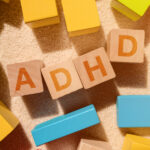The human brain is a marvel of complexity, orchestrating thoughts, emotions, and behaviors through intricate neural networks. Yet, for individuals with Attention Deficit Hyperactivity Disorder (ADHD), this delicate balance is disrupted, leading to challenges in attention, impulse control, and hyperactivity.
In this article, we embark on a journey to explore the underlying neurobiology of ADHD, unraveling the mysteries of what causes this enigmatic disorder.
The Neurochemistry of ADHD
At the heart of ADHD lies an intricate interplay of neurotransmitters, the chemical messengers that facilitate communication between neurons in the brain. Research suggests that imbalances in dopamine and norepinephrine, two key neurotransmitters involved in attention and executive function, may contribute to the development of ADHD. Dopamine regulates the brain’s reward system and plays a role in motivation, focus, and pleasure, while norepinephrine modulates arousal, alertness, and stress responses.
Genetic Influences
Genetics also plays a significant role in the etiology of ADHD, with studies indicating a strong hereditary component. Individuals with a family history of ADHD are at a higher risk of developing the disorder, suggesting that genetic factors contribute to susceptibility. Genome-wide association studies (GWAS) have identified several candidate genes associated with ADHD, including those involved in dopamine signaling, synaptic function, and neurotransmitter transport.
Brain Structure and Function
Advances in neuroimaging techniques have provided valuable insights into the structural and functional differences in the brains of individuals with ADHD. Studies using magnetic resonance imaging (MRI) have revealed alterations in brain regions implicated in attention, impulse control, and executive function, such as the prefrontal cortex, basal ganglia, and cerebellum. These findings suggest that ADHD may involve abnormalities in neural circuitry and connectivity, leading to dysregulated cognitive processes.
Environmental Factors
While genetics and neurobiology play central roles in ADHD, environmental factors also contribute to its development and expression. Prenatal exposure to maternal smoking, alcohol consumption, or maternal stress has been linked to an increased risk of ADHD in offspring. Additionally, complications during pregnancy or childbirth, such as premature birth or low birth weight, may predispose individuals to ADHD. Environmental toxins, such as lead exposure, have also been implicated in the onset and severity of ADHD symptoms.
The Role of Neurodevelopment
ADHD is considered a neurodevelopmental disorder, meaning it arises from disruptions in brain development during critical periods of growth and maturation. Early childhood experiences, including social interactions, parental caregiving, and environmental stimuli, shape the developing brain’s structure and function. Disruptions in these developmental processes may contribute to the emergence of ADHD symptoms later in life, underscoring the importance of early intervention and support.
The Complexity of Comorbidity
ADHD rarely exists in isolation; it often coexists with other neurodevelopmental, psychiatric, or learning disorders, further complicating its diagnosis and treatment. Common comorbidities include mood disorders (such as depression and bipolar disorder), anxiety disorders, learning disabilities (such as dyslexia and dyscalculia), and autism spectrum disorder (ASD). The intricate interplay between ADHD and comorbid conditions underscores the multifaceted nature of the neurobiological processes underlying mental health disorders.
The Quest for Understanding and Innovation
As our understanding of the neurobiology of ADHD continues to evolve, so too does our approach to diagnosis, treatment, and support. Advances in genetics, neuroscience, and personalized medicine offer promising avenues for precision medicine approaches tailored to individual needs. By unraveling the mysteries of ADHD’s neurobiology, we move closer to developing more effective interventions that target the underlying mechanisms of the disorder, promoting better outcomes and quality of life for individuals affected by ADHD.
The journey to unravel the neurobiology of ADHD is a testament to the complexity and resilience of the human brain. Through the lens of genetics, brain imaging, and environmental influences, we gain a deeper understanding of the multifaceted factors contributing to ADHD’s etiology. As we continue to explore the intricacies of ADHD’s neurobiology, we pave the way for innovative approaches to diagnosis, treatment, and support, empowering individuals to navigate their unique neurobiological landscapes with compassion, understanding, and hope.






